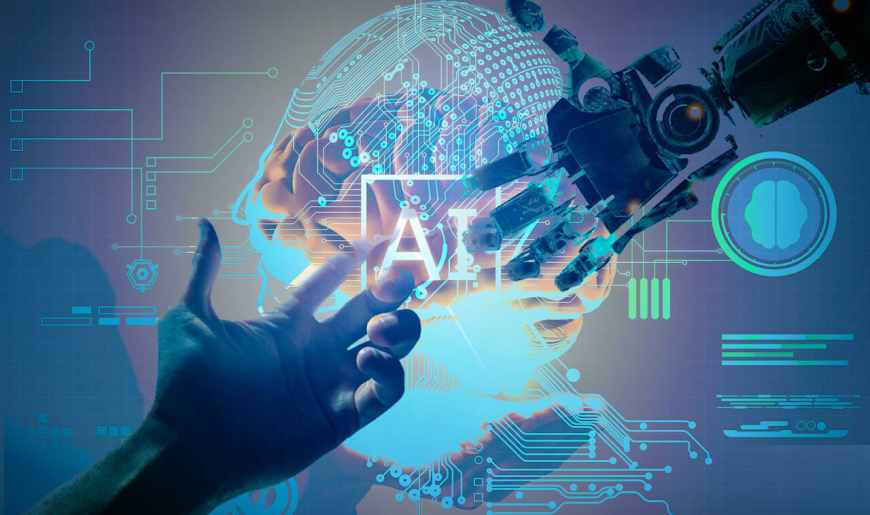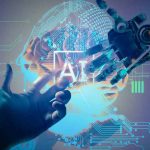Machine Learning and Artificial Intelligence: What Is Real Right Now and What Is Just Vapor?

This is a post by Mark Allen, a General Manager at Identiv, a global leader in digital security and identification in the Internet of Things (IoT).
Machine learning is rapidly changing the face and pace of business as we know it. On one hand, we see a mountain of promises made by technology companies that machine learning will make life easier for all. At the same time, there is a part of the population afraid of machine learning, particularly when it comes to job availability. We will explore machine learning and find out how it can realistically support business.
What is machine learning?
Machine learning is part of the umbrella of technology widely known as artificial intelligence (AI) focused on creating systems that learn from historical data, identify patterns in learning, and make logical decisions that require little to no human interaction. In short, it is a method of data analysis involving a variety of digital information, i.e., numbers, words, clicks, and images.
Machine learning applications are able to learn from data input and continue to improve upon the accuracy of the output with the use of automated optimization methods. The overall quality of a machine learning model depends upon the following
#1. Machine learning requires high-quality input data.
Much like a garden requires quality fertilizer to grow, a machine learning model requires high-quality data to get the best outcome. Low-quality, or inaccurate data, will yield a poor output.
#2. Machine learning requires a high-quality machine learning model.
There are a ton of algorithms a data scientist can choose to meet their needs. It is important to choose the algorithm best suited for each use case. More complex neural networks are popular for some algorithms because they tend to be more accurate and versatile. However, a simpler model will often perform better when using a lower amount of data.
Starting with a proven machine learning model is imperative because it is more likely to accurately find features and patterns in data. The better the data, the better decisions, and predictions the machine will be able to make.
Why is machine learning important to modern business?
Machine learning is growing in popularity due to three factors:
- Availability of a wide range of data in large volumes.
- Wide, affordable access to computational power.
- Vast access to high-speed internet.
These factors make it easy for companies to develop computational models that can quickly and accurately analyze super-complex data sets.
Machine learning is being used to cut costs, minimize business risk, and improve quality of life. This can include making product recommendations, exposing potential cybersecurity threats, powering self-driving cars, and even labeling an x-ray as cancerous or not. As time moves forward, we are sure to see more examples of how machine learning can improve life across the spectrum.
But what can machine learning do, realistically, to help move technology forward? We can start by busting a few of today’s machine-learning myths.
Myth #1: Machine learning is more intelligent than humans.
There is no doubt about machine learning’s powerful ability to find patterns and correlations using available data sets. However, at this point, humans are still needed to intervene to make assessments on the quality of results.
Using the example of a medical diagnosis, machine learning is able to quickly review available data. However, doctors and supporting medical professionals are needed to rule out inconsistencies in findings.
Myth #2: Machine learning will take over jobs.
While the modern industry is seeing more robots automate manual work in places like factories, production facilities, and medical surgeries, the implementation – at this moment – is more of an assistive technology and not a replacement for human minds and hands. In fact, machine learning has made modern business practices more efficient via the simplification of repetitive processes.
Myth #3: Machine learning never changes.
Cybersecurity is a great example of how machine learning is always expanding out of necessity. The machine learning algorithms of today’s cybersecurity environment will no longer work in the next few weeks to months ahead. Why? Because criminals are always finding new ways to overtake technology for their own purposes. While machine-learning models may be routine in a factory or warehouse, cybersecurity machine-learning models will always have to be built from scratch.
Myth #4: Machine learning requires more data to get reliable results.
If you are a data scientist, it may make sense to add more data points to a machine-learning model. This may not always be the best use of data. If an enormous amount of data is dumped into a machine learning model, there is a risk in creating a model that memorized the information, leading to a case of model overfitting. This can also result in high error rates for unseen data. Your machine model needs that garden-fertilizer data for high-quality output. It also requires high-quality data to have a better chance of building the best machine-learning model.
Myth #5: Machine learning can predict the future.
It is partially true companies can use machine learning to predict the future. But machine learning models can only predict the future if future events have some relevance or connection to past events. For example, there are some machine learning models that use past stock prices to predict future stock prices. Also, the weather can be predicted based on past weather information. Yet if a machine model is asked to make a prediction based on information that was not input prior to the development of the model, the prediction will not be dependable.
The use of machine learning is expected to grow. As the internet and data sets become more powerful, we can expect that companies will choose to utilize machine learning models to solve some of the most basic business problems.
About the author:
 Mark Allen was appointed Identiv General Manager, Premises in January 2016. Mr. Allen has been with Identiv since 2003, most recently in a product manager role. He has more than 29 years of practical experience in technology at start-ups and public companies, ranging from programming, software development, and engineering to business development, R&D, and operations.
Mark Allen was appointed Identiv General Manager, Premises in January 2016. Mr. Allen has been with Identiv since 2003, most recently in a product manager role. He has more than 29 years of practical experience in technology at start-ups and public companies, ranging from programming, software development, and engineering to business development, R&D, and operations.
Prior to joining Identiv, Mr. Allen was Founder and President at Preferred Business Solutions Inc. from June 1999 to September 2003. Prior to Preferred Business Solutions, he served as VP of Engineering at Access 360 from August 1994 to June 1999. His previous positions also include Software Development Manager at The Orange County Register and Lead Programmer Analyst at Security Pacific Financial Services.
Mr. Allen majored in Computer Science, Math, Commerce, and Physics at Kings Norton in the United Kingdom.




